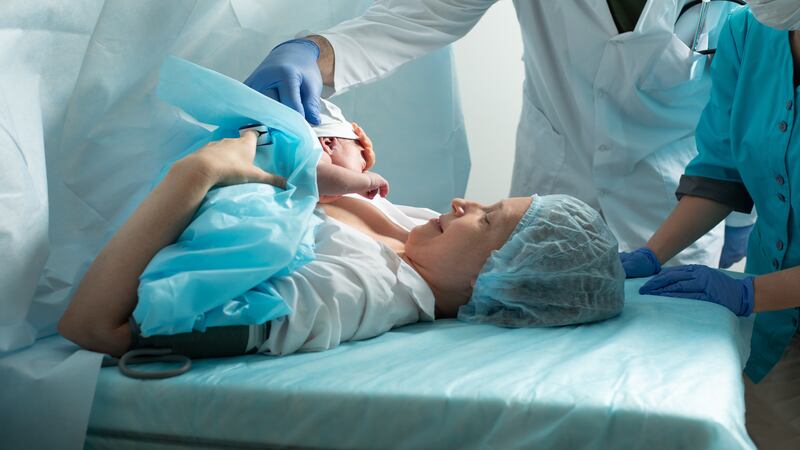 A cesarean section is a surgical procedure to deliver a baby by giving an incision over the mother’s abdominal wall and uterus. It’s mostly done when normal delivery is not possible or in dire emergencies where the mother is in labor and the baby is in distress. However, at present times it can also be done selectively. Like all procedures, C-section babies also have benefits and side effects for both mother and baby (1)
A cesarean section is a surgical procedure to deliver a baby by giving an incision over the mother’s abdominal wall and uterus. It’s mostly done when normal delivery is not possible or in dire emergencies where the mother is in labor and the baby is in distress. However, at present times it can also be done selectively. Like all procedures, C-section babies also have benefits and side effects for both mother and baby (1)
In recent times c section has become popular and many people are using c section alternate to vaginal birth. In this article, we will be discussing in detail the long-term effects of c-section, pros, and cons of vaginal birth and c-section etc.
Is C-Section Safe For Babies?
Like vaginal delivery, there is no specific harm that a baby can have if the mother undergoes c-section. As normally practiced after the baby is born the baby is handed over to the pediatrician and the baby is taken care of under a warmer, proper suction is done, and a thorough checkup of the baby is done. If all the steps are properly performed then babies will be safe even if born by c-section (2).
Long-Term Effects of C-Section on Babies
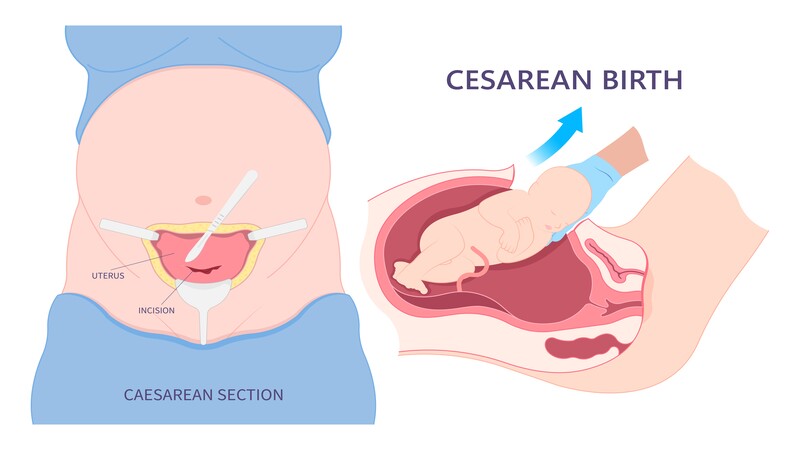
While C-section is a lifesaving process at times, it can put the baby in a complication that may have a lifelong effect. There can be both long-term and short-term effects on the babies after c section. Some of the effects a C-section on the baby may include are as follows.
1. Under-developed Immune System
During a vaginal delivery, the baby is exposed to the friendly bacteria of the mother in the birth canal. These bacteria colonize the bowel of the baby and help in increasing the immunity of the child [3]. Babies born via C-section, especially during an emergency (like losing amniotic fluid due to the rupture of the sac), get less opportunity to get exposed to these bacteria [4]. This affects the long-term health of the baby.
2. Breathing Issues
The risks of breathing issues are far more pronounced among children born via C-section. This is due to several factors:
Respiratory Distress Syndrome
This is a potentially life-threatening condition, which is found to occur four times higher among children born via C-section. Normally the blood vessels in the lungs of the baby relax during birth, increasing the flow of the blood through it, to increase the intake of oxygen in exchange with the carbon dioxide. However, the blood vessels of the lungs of children born through C-section, for some reason, will not relax, thus increasing the level of carbon dioxide and decreasing the level of oxygen in the blood. This can lead to brain and organ damage in the child.
Absence of Contractions
It is usually the contractions during the labor, which prepare the lungs of the baby to breathe independently after the delivery. The babies born through a scheduled C-section, that is, a C-section performed before the labor starts, are more likely to be subjected to difficulty breathing on their own initially since their lungs lack breathing practice.
Transient Tachypnea
Otherwise called “wet lungs” is a condition characterized by abnormally fast and labored breathing of the child during the first few days. This happens to children born through C-section, where the fluid fills the lungs of the baby (when the baby is inside the womb) and is not completely expelled. (During vaginal birth, the contractions help to discharge it naturally).
3. Chances of Surgical Injuries
Although very rare, surgical injuries can happen to the skin of the babies while performing a C-section (surgical laceration). The chances increase to 15% if:
- The surgeon is less experienced
- The membrane ruptures before a c-section
- The Emergency C-section associated with active labor
4. Increased risk of asthma
The common asthma rate is 8.4 percent, which hops to 9.5 percent among those delivered through C-section. Some studies conducted in the Netherlands have established a close connection between babies delivered by C-sections and incidences of asthma [16].
5. Less concentration
The birth experience is found to have an impact, somehow, on the working of the brain. A study conducted concluded that babies born via a cesarean can affect the spatial attention of the child, affecting at least one form of a baby’s ability to concentrate.
6. Obesity
The obesity rates among children delivered vaginally are found to be around 16 percent. Whereas, the obesity rate gets elevated to 19 percent among the children delivered through C-section. The risk of type 1 diabetes is found to be dramatically increased to 20% (in the future) among babies born via C-section.
7. Missing on Skin to Skin
Research has it that when a baby is placed on the mother’s abdomen just after birth, it has a positive effect on both the mother and the baby. The benefits of an undisturbed first hour after birth are immense, as it lets the baby’s natural survival instincts kick in, and both the mother and the baby draw comfort and relaxation from each other
8. Delayed Breastfeeding
Even after c-section, the baby has a second chance to be exposed to these friendly bacteria. This is when they immediately breastfed after delivery. Colostrum, the first milk, has these bacterial strains in abundance, which help with immunity. However, the use of medications and anaesthesia affect the behavior of the mother and the infant, leading to a delay in breastfeeding. Babies delivered through C-section if formula fed, possess a higher risk of health issues, as they are missing this natural immunity. However, there is no recent researches to prove these theories.
Comparing C-Section And Vaginal Birth: Pros And Cons For The Baby
Although both vaginal delivery and c-section should be done in view of medical factors or the mother’s choice. Both methods are safe if done under proper guidance but both have their own set of pros and cons.
| C-Section | Vaginal Delivery | |
| Duration | It takes around 45 minutes | Normal labor can last up to 12 to 14 hours |
| Hospital Stay | Longer around 3 days | Shorter, can be discharged next day |
| Pain | Initially pain is more but subsequently it mellows down | Pain during vaginal birth is extreme but after the delivery there not much pain |
| Complication | Complication can be more during and post c section | Complication is vaginal birth is low |
| Emergency | Emergencies during the c section can be bleeding , hysterectomy, infection. | If vaginal birth is not progressing or the baby is having distress there is a need for an emergency c section which can lead to more complications. |
| Plan | If c-section is planned electively then there is less chance of any emergency and less chances of complication | Vaginal birth can occur anytime , anywhere even if the family members are not prepared. |
How To Ensure Baby’s Health After a C-Section Delivery?
The baby’s health should be ensured mainly by the pediatrician as soon as the baby is delivered post that skin to skin contact with the mother is essential. Baby should be kept under warmer, proper shots of vaccines to be given, and the airway to be cleared post-delivery, as soon as the mother is shifted to normal bed, breastfeeding needs to be started.(5) The baby should be checked thoroughly for any anatomic or physiologic or any genetic disorder. Sugar blood groups should be checked for any added treatment to be given or not.(6)
6 Popular Myths And Facts About C-Section Deliveries
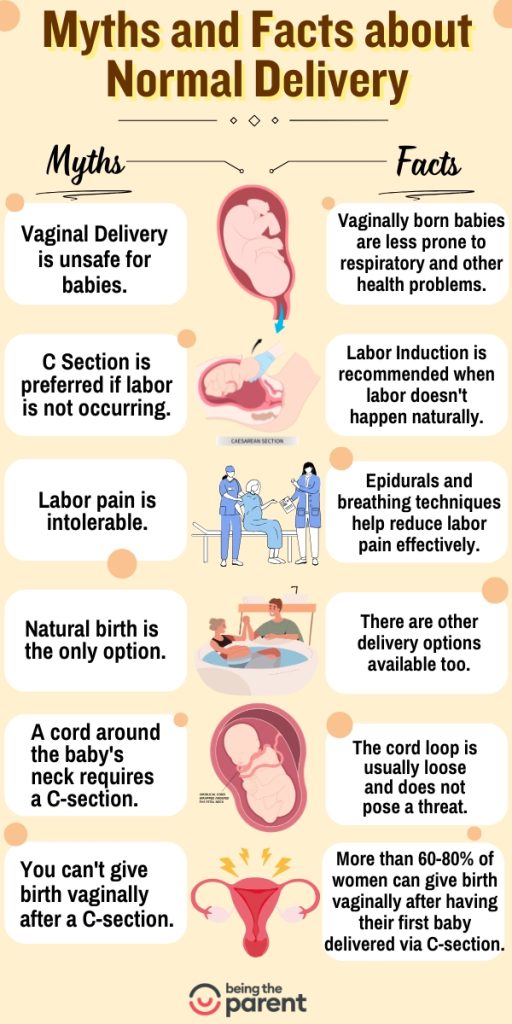 Since most mothers in recent times are considering c-section over vaginal births, we need to discuss the myths that surround c-section. They are as follows-
Since most mothers in recent times are considering c-section over vaginal births, we need to discuss the myths that surround c-section. They are as follows-
1. C Section Is Done More Easily Than Normal Delivery – MYTH
The fact is that c section is a complex surgical procedure that needs expertise and practice and is done by an obstetrician (7). So it is never an easy process.
2. Mothers Cannot Breastfeed After C Section – MYTH
The fact says that since its a surgical intervention mothers might find it difficult to sit and breastfeed. But with the help of a little assistance from caregivers breastfeeding can be immediately started post-delivery.
[Read : Breastfeeding After C-Section Delivery]
3. Women Cannot Have Vaginal Birth After C Section – MYTH
This is also untrue. There is a procedure called vaginal delivery after c section (VBAC) which means after proper evaluation of the woman doctors can go for VBAC delivery. However, the circumstances should be good and the mother must get proper guidance.
4. Backache After C Section or Anaesthesia is Inevitable – MYTH
This is the most common myth in women. It is a well-known myth that spinal anaesthesia is given just before c section. There are certain dos and don’ts that one must follow after c section. In the absence of doing so many women get backache at a later stage. However, there are researches that shows there is no connection between backache and c section(8).
5. C Section Is More Expensive – MYTH
In today’s world where everything is costly, the cost of vaginal delivery is quite similar to that of c section. Only certain doctor and medical charges are not required which is nominal when put together.
6. Multiple C Sections Are Fine – MYTH
Cesarean for more than 3 to 4 is not recommended by an obstetrician since this can cause subsequent operation or c-section difficult on the table(9).
Often c-section is not the first preference for many mothers but circumstances does not favour for normal delivery. Repeat c-section is often advised by doctors depending on the condition of the mother and baby.
What Makes C-section Babies More Susceptible To Develop Immunological Diseases?
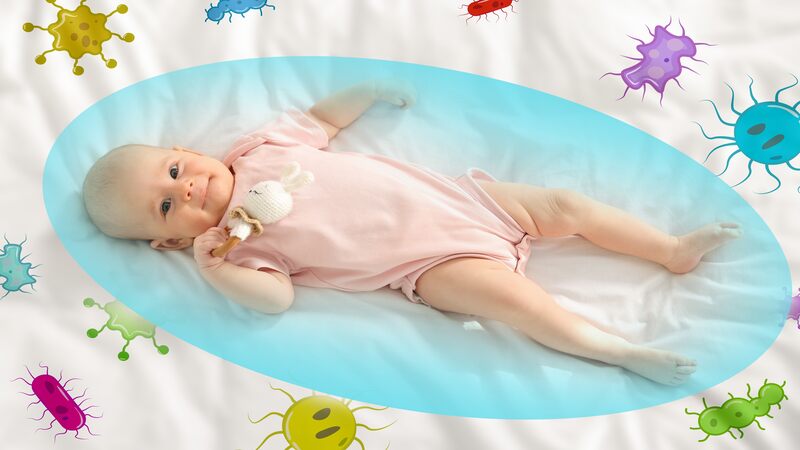 It has been seen in some cases of babies with c-section that due long term effect the babies later in their life can develop some immunologic disease.(10) The immunologic disease can be allergy, type 1 diabetes, inflammatory bowel disease and so on.(11) The exact reason is not properly known but it can be either due to decreased presence of bacterial triggers which can be in turn good for the body or excess bacterial reaction can hamper the initial immunologic response to the body(12)
It has been seen in some cases of babies with c-section that due long term effect the babies later in their life can develop some immunologic disease.(10) The immunologic disease can be allergy, type 1 diabetes, inflammatory bowel disease and so on.(11) The exact reason is not properly known but it can be either due to decreased presence of bacterial triggers which can be in turn good for the body or excess bacterial reaction can hamper the initial immunologic response to the body(12)
Cesarean Birth and Child Cognitive Development
Generally the babies that are born vaginally vs those that are born via c-section don’t have any specific difference in rates of any cognitive development. A lot of research has been done which shows c-section babies don’t have an increased risk of cognitive development.(13)
Do C-Section Babies Have Different Personality?
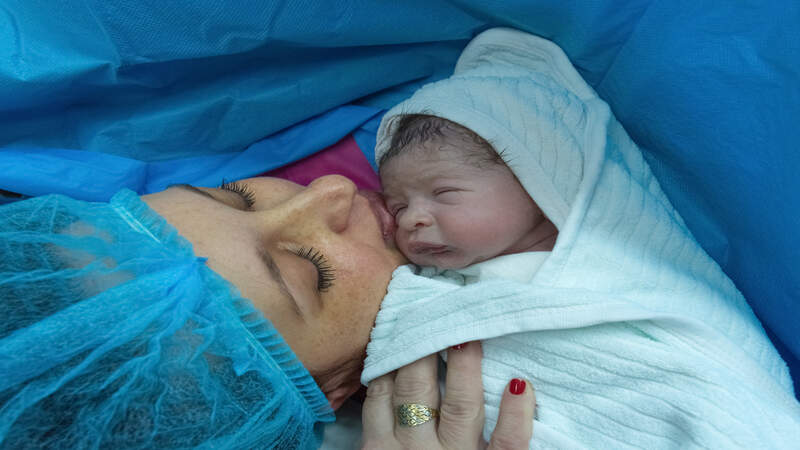 As discussed before, there is no such difference in personality disorders in babies born via vaginal delivery or via c-section. Although some research shows there are slightly high chances of autism, attention disorder, and hyperactivity seen in babies born by c-section.(14)
As discussed before, there is no such difference in personality disorders in babies born via vaginal delivery or via c-section. Although some research shows there are slightly high chances of autism, attention disorder, and hyperactivity seen in babies born by c-section.(14)
As per our above discussion both the procedure comes with its own sets of pros and cons. We cannot pinpoint which one is better and which should not be done. But as researchers have found there is not much difference between both procedures. So the decision of c-section or vaginal delivery should be taken by consultation of doctors, and health care providers and also maternal choice should also be kept in mind. The disorders which has been discussed earlier doesn’t happen in all babies in c-section , it can occur in some percentage of the babies and other parental and genetic factors are also involved in the occurrence of any disease.(15)
[Read : Planned C-Section]
FAQ’s
1. What Are The Negative Effects Of C-Section On Baby?
There are not many negative effects as such in baby’s delivered by c-section. In recent times many mothers opt for c-section as it is generally safe for both mother and baby.
2. Does C-Section Affect The Babies Brain?
The baby’s birth in c-section generally doesn’t affect the brain of the baby. However, if the baby is delivered prematurely or in an emergency due to distress there can be an effect on the brain.
3. Does C-section Anaesthesia Affect the Baby?
Generally c-section is done under spinal anaesthesia. It is safe under general anaesthesia but if c-section is under general anaesthesia for any emergency situation then delivery should be performed as early as possible otherwise it might have adverse effects on the baby.
[Read Also: Sex After C-Section – Is it Safe and When to Have]
References
- The lancet, short-term and long-term effects of caesarean section on the health of women and children-https://www.thelancet.com/journals/lancet/article/PIIS0140-6736(18)31930-5/
- Słabuszewska-Jóźwiak A, Szymański JK, Ciebiera M, Sarecka-Hujar B, Jakiel G. Pediatrics Consequences of Caesarean Section-A Systematic Review and Meta-Analysis. Int J Environ Res Public Health. 2020 – https://www.ncbi.nlm.nih.gov/pmc/articles/PMC7662709/
- Zakerihamidi M, Latifnejad Roudsari R, Merghati Khoei E. Vaginal Delivery vs. Cesarean Section: A Focused Ethnographic Study of Women’s Perceptions in The North of Iran. Int J Community Based Nurs Midwifery. 2015 Jan –https://www.ncbi.nlm.nih.gov/pmc/articles/PMC4280556/
- Obstetrics and gyneacology, Planned vaginal delivery versus elective caesarean section: a study of 705 singleton term breech presentations- https://obgyn.onlinelibrary.wiley.com/
- Wiley, Immediate or early skin-to-skin contact after a Caesarean section: a review of the literature- https://onlinelibrary.wiley.com/doi/abs/10.1111/mcn.12128#
- Kristensen, K., & Henriksen, L. (2016). Cesarean section and disease associated with immune function. The Journal of allergy and clinical immunology- https://pubmed.ncbi.nlm.nih.gov/26371844/
- Polidano C, Zhu A, Bornstein JC. The relation between cesarean birth and child cognitive development. Sci Rep. 2017 Sep- https://www.ncbi.nlm.nih.gov/pmc/articles/PMC5597642/
- Vibeke Myrup Jensen, Miriam, Can Caesarean section improve child and maternal health? The case of breech babies, Journal of Health Economics, Volume 39 – https://www.sciencedirect.com/
- Ingela Wiklund, Ellika Andolf, HÃ¥kan Lilja, Ingegerd Hildingsson, Indications for cesarean section on maternal request – Guidelines for counseling and treatment, Sexual & Reproductive Healthcare, Volume 3, Issue 3, 2012, – https://www.sciencedirect.com/
- M.Y.K Wee, H. Brown, F. Reynolds, The National Institute of Clinical Excellence (NICE) guidelines for caesarean sections: implications for the anaesthetist, International Journal of Obstetric Anesthesia,
Volume 14, Issue 2, 2005 – https://www.sciencedirect.com/ - HANDELZALTS, J.E., FISHER, S., LURIE, S., SHALEV, A., GOLAN, A. and SADAN, O. (2012), Personality, fear of childbirth and cesarean delivery on demand. Acta Obstetricia et Gynecologica Scandinavica- https://obgyn.onlinelibrary.wiley.com/doi/full/10.1111/j.1600-0412.2011.01287.x
- Ashwin Ramachandrappa, Lucky Jain, Elective Cesarean Section: Its Impact on Neonatal Respiratory Outcome, Clinics in Perinatology, Volume 35, Issue 2, 2008 – https://www.sciencedirect.com/
- Toril KolÃ¥s, Ola D. Saugstad, Anne K. Daltveit, Stein T. Nilsen, PÃ¥l Øian, Planned cesarean versus planned vaginal delivery at term: Comparison of newborn infant outcomes, American Journal of Obstetrics and Gynecology, Volume 195, Issue 6, 2006 – https://www.sciencedirect.com/
- Frontiers.org, Elective Cesarean Section on Term Pregnancies Has a High Risk for Neonatal Respiratory Morbidity in Developed Countries: A Systematic Review and Meta-Analysis-https://www.frontiersin.org/articles/10.3389/fped.2020.00286/full
- Vidic, Z., Blickstein, I., Štucin Gantar, I., Verdenik, I., & Tul, N. (2015). Timing of elective cesarean section and neonatal morbidity: a population-based study. The Journal of Maternal-Fetal & Neonatal Medicine – https://www.tandfonline.com/doi/abs/10.3109/14767058.2015.1087500
